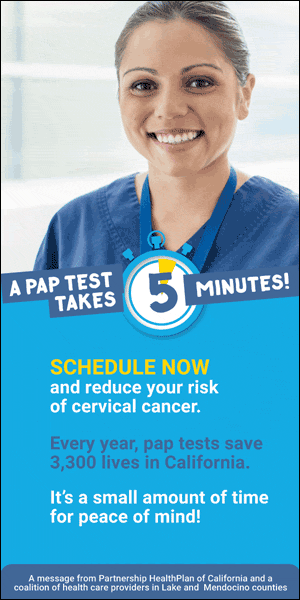

Every sleep-deprived parent has a story about getting their baby to rest. Our infant daughter required 30 minutes of one of us bouncing on an exercise ball while she was strapped to one of our chests; in lieu of a lullaby, They could be Giants’ “Mickey Mouse Clubhouse Theme” — at full blast — appeared to lull her to sleep.
But what could be the most common method around the globe — over sleeping the same bed as the baby — is usually not mentioned. Although the number of parents who sleep within the same bed as their baby is probably in the millions, according to James McKenna, PhD, director of the Mother-Baby Behavioral Sleep Laboratory at the University of Notre Dame, the practice has been discouraged by the American Academy of Pediatrics (AAP), citing it as a risk factor in the 3,500 sleep-related deaths of infants every year.
The AAP has acknowledged that the practice is prevalent and did update its guidelines not too long ago; however, they included a recommendation that parents sleep in the same room — but not the same bed — as their baby.
McKenna, who holds a doctorate in biological anthropology and it has been studying mother-and-infant sleep since his son was created in 1978, goes a step further, offering detailed safety guidelines for moms and dads who bed-share. It’s essential information, says McKenna, the author of Sleeping With Your Baby: A Parent’s Guide to Cosleeping, for bed-sharing parents who may feel shamed into not referring to it. Doctors and clinics adhering to the AAP approach, McKenna says, often don’t wish to offer advice about it, although many, like McKenna, may disagree with the oversimplicity of the AAP guidelines.
“Mothers are lying to physicians since there is no ability to have an honest, bidirectional conversation,” McKenna says. “A lot of moms take their babies to sleep and feel terrible even though breastfeeding and bed-sharing are functionally integrated and evolved as you biological system.
The AAP declined an interview request, but here McKenna shares pointers on various sleeping environments, since, as he puts it, he’s “never known any baby who encountered just one sleeping environment.”
Experience Life | Can you explain your meaning of co-sleeping?
James McKenna | It’s really a fairly simple concept. The form it takes varies as much as the various cultures doing it. All it describes is sleeping within sensory proximity and/or contact with each other to be able to detect and respond to the cues of the other.
EL | Exactly what does that look like across different cultures?
JM | It might be baskets hanging from the ceiling, hammocks, or perhaps a bassinet right next to the bed within arm’s reach. You will find futons used in Japan and cradle boards utilized by the Navajo. It usually reflects the kind of resources available to create sleeping structures.
EL | Can you explain the term “separate-surface co-sleeping”?
JM | It just means that mother and baby take presctiption different surfaces, so that wouldn't include bed-sharing.
EL | And also your term “breastsleeping”?
JM | When babies are in need, even if both mom and baby are exhausted, they're biologically designed to reach for each other. Many mothers never intended to bed-share, but it emerges because it makes breastfeeding — managing her milk supply — and sleep easier. That’s why I coined the word “breastsleeping,” when co-sleeping and breastfeeding occur in the absence of all other independent hazards.. . . It’s probably the most optimal way to co-sleep because breastfeeding affects the physiological statuses of both the mother and infant in clinically positive ways, making the bed-sharing aspect safer.
EL | How so?
JM | The first thing it does is induce more arousals [wake-ups] in every other — as well as more breastfeeds, providing practice at arousing, which is an important acquired skill permitting babies to reinitiate breathing following an apnea while asleep, for example. After about a month, babies gradually have to use cortical (higher-brain) structures to purposefully reinitiate a breath after an apnea because they lose the gasping reflex in this early period after in regards to a month. Up until about a month it is a reflex that’s unconscious and lower-brainstem-based. While breastsleeping, both sleep lighter, too, due to the exchange of sensory-based signals mutually regulating each other. And more sleep is spent in lighter stages [stages 1 and a pair of, which] are safer for baby; deeper sleep means it’s harder for them to wake up, including when they're in danger. It is biologically normative for baby to spend most sleep time in stages 1 and a pair of, rather than 3 or 4 , as the baby responds to mother’s vocalizations, signals, smells, and movements. Moms spend time in lighter stages rest, too — and thus can be more vigilant, making the breastsleeping arrangement even safer. Babies do change everything.
EL | Is there any research that backs that up?
JM | In one study that checked out 37 moms and babies in our sleep laboratory, we found two things: Mothers and babies who bed-shared got more sleep in minutes, and 70 percent of the moms said hello was “enough” or “good,” in contrast to 54 percent of the moms who slept inside a different room than their baby. (We had everyone sleep as they do at home for the first night, switched for that second night, and then did the alternative the third night.) Moms and babies who co-slept moved their breathing patterns to sync with each other. When the babies slept separately, sleep patterns were very, very different.
EL | Can you bottle-feed and co-sleep?
JM | I do believe that a bottle-feeding mother can remain vigilant enough to protect her baby if bed-sharing, but she will need to make sure she really psychologically commits to being aware of the baby’s presence while asleep. I am most comfortable with being able to recommend bed-sharing (in the absence of hazardous factors) if breastfeeding is involved, because of the ways the breastfeeding itself changes not just the baby’s sleep behavior and physiology, but the mother’s, too. When breastfeeding, there are lots of arousals [wake-ups], lots of brief awakenings to oxygenate, and also the baby remains for longer periods in lighter sleep. A bottle-feeding mother spends additional time in deep sleep (along with her baby), with fewer arousals for both mother and infant, which means she might not be as able to monitor her infant and respond to the baby’s signals, cues, and overall needs. Moreover, bottle-fed babies move around in the bed more, while breastsleeping babies stay put at chest level in the direction of their mothers and do not risk falling off the bed or into a gap or hole developed by a space between a headboard and mattress.
[That said,] what I really think should be avoided is making declarative statements about what never to do, except where it is something specific like “do not put your infant prone,” “don't sleep with your baby if drunk or desensitized by drugs,” “don't sleep with your baby on couches, sofas, chairs, or recliners.” [I’d guess] thousands and thousands of nonbreastfeeding mothers (and fathers) are sleeping using their babies, and it does not mean it is necessarily too risky whatsoever. . . . Every family should be informed by what they can do to maximize safety, even telling parents, “If you sleep with your baby, ensure the adult in the bed understands the baby is there. Make sure each adult internalizes that he or she must be aware of the baby even in their sleep, like saying to yourself, “Baby in bed!” This really works.
EL | Can you bed-share safely? How?
JM | In urban, industrialized environments where we've beds and bedframes, etc., you need to be conscious of what is not beneficial: blankets, bedding, spaces between the mattress and the headboard, for instance. Never bed-share if you smoked while pregnant — that potentially damages an infant’s arousal mechanisms — rather than bed-share while under the influence of drugs or alcohol. Being prepared is important because more education, not less, can make it safer. And that’s being denied to parents. [It’s] a situation where informed professionals are being threatened with their jobs should they teach safer bed-sharing in or around a healthcare facility. It’s totally unethical to have to wait the information that we have. Lactation counselors would never recommend that any particular family should bed-share, because they have no idea what the circumstances are; but to ban them from saying something that could reduce sleep-related deaths is unethical and puts health providers at odds with their own ethical judgments.
EL | Why is it being denied?
JM | The AAP thinks that by raising co-sleeping/bed-sharing safety factors they're endorsing the practice, or that folks will think they think it’s OK, but the risks of not telling or holding back easy, simple safety information, like keeping other children from the bed-sharing baby, is very important and can create a huge difference. It is absolutely unconscionable what is going on in hospitals when lactation counselors and specialists are now being told that if they even mention co-sleeping they'll be fired, and that life-saving information is being withheld. Parents are now being left with the impression that they have no rights to determine how to care for their babies in this way, and this is a violation of the parents’ and also the babies’ civil liberties, when the bed-sharing has been done responsibly.
EL | What about the AAP citing co-sleeping like a risk factor in the 3,500 sleep-related deaths of infants annually?
My response to this statistic is that in every way possible this number skips over and dismisses the details of each death, wherein most these tragic deaths are related to multiple independent risks outside of the act of bed-sharing itself; rather, they need reference to the circumstances and the conditions within that the bed-sharing took place. When those facts are examined it becomes not quite so simple or necessarily even accurate to make use of this number as a justification for recommending against any and all bed-sharing, as many prominent SIDS researchers and prestigious organizations like the World Health Organization, UNICEF, and lactation support and counseling organizations all over the world maintain.
EL | What are the biggest risks associated with Sudden Infant Death Syndrome (SIDS)?
JM | Prematurity; a gestation where the fetus experiences its mother smoking; formula or bottle feeding; putting baby to rest prone (on stomach); sleeping on soft surfaces, sofas, couches, recliners (although the risk with soft surfaces may be suffocation rather than SIDS).
EL | How long would you recommend some form of co-sleeping?
JM | The optimal recommendation may be the first six to 12 months. Babies’ brains are only at A quarter of their adult volume in the first year. When the baby is sleeping, it’s such as the baby’s brain is going to school. By giving that baby a cumulative sensory stimulation, you’re creating the architecture of baby’s brain: optimizing potential for talents, resilience, intellectual achievements. The first experiences of baby’s day-to-day really matter. But we Westerners have a tendency to think there are these artificial cutoffs. There’s really no “When in the event you stop this?” There’s no problem with it as long as it’s a great relationship. [But] if it starts bothering the parent, then don’t do it — it’s not healthy when anyone is unhappy with something relational such as this.













